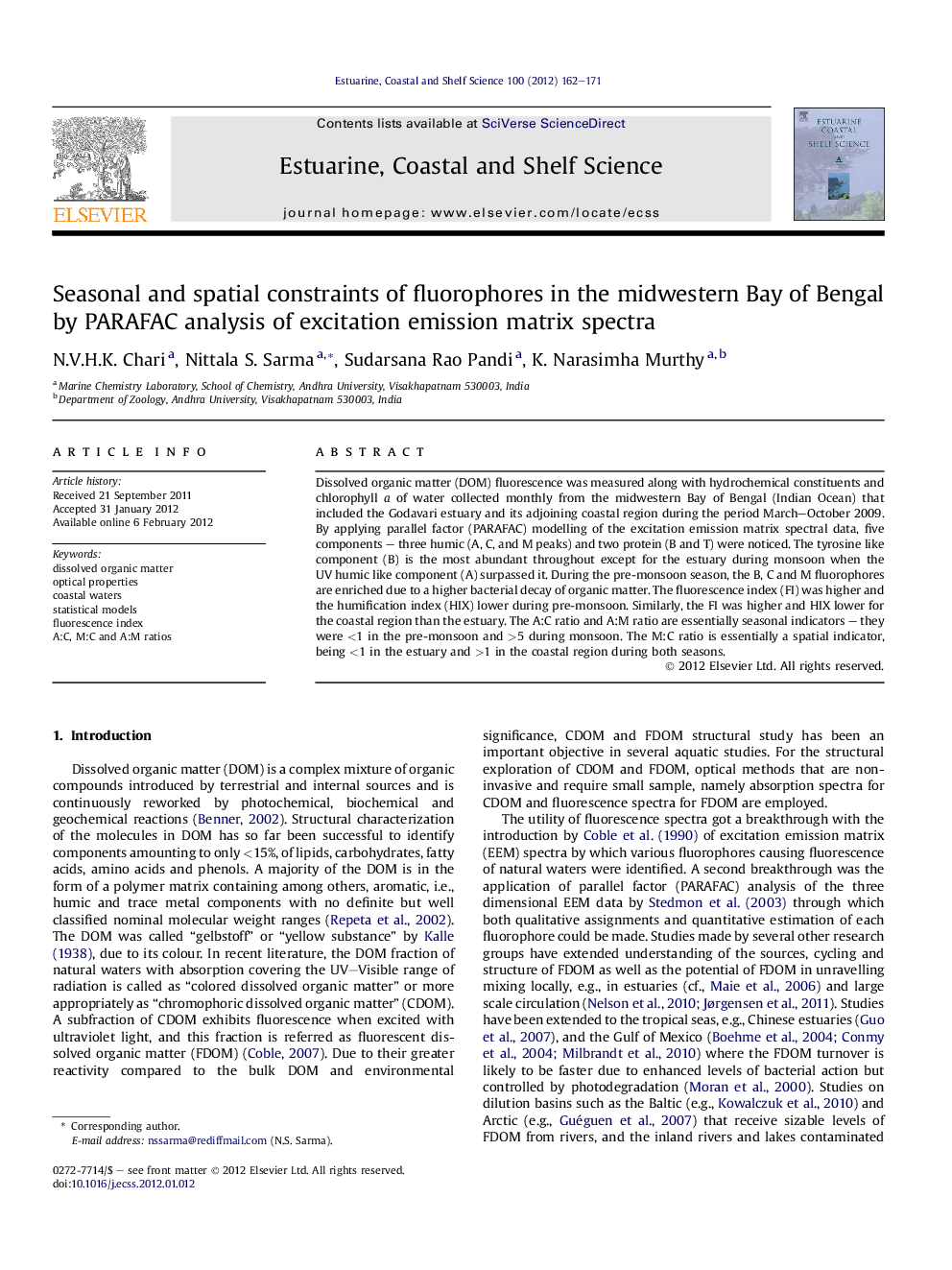| Article ID | Journal | Published Year | Pages | File Type |
|---|---|---|---|---|
| 4540273 | Estuarine, Coastal and Shelf Science | 2012 | 10 Pages |
Dissolved organic matter (DOM) fluorescence was measured along with hydrochemical constituents and chlorophyll a of water collected monthly from the midwestern Bay of Bengal (Indian Ocean) that included the Godavari estuary and its adjoining coastal region during the period March–October 2009. By applying parallel factor (PARAFAC) modelling of the excitation emission matrix spectral data, five components – three humic (A, C, and M peaks) and two protein (B and T) were noticed. The tyrosine like component (B) is the most abundant throughout except for the estuary during monsoon when the UV humic like component (A) surpassed it. During the pre-monsoon season, the B, C and M fluorophores are enriched due to a higher bacterial decay of organic matter. The fluorescence index (FI) was higher and the humification index (HIX) lower during pre-monsoon. Similarly, the FI was higher and HIX lower for the coastal region than the estuary. The A:C ratio and A:M ratio are essentially seasonal indicators – they were <1 in the pre-monsoon and >5 during monsoon. The M:C ratio is essentially a spatial indicator, being <1 in the estuary and >1 in the coastal region during both seasons.
► Time series study of EEM fluorescence of a tropical monsoonal estuary and coastal water of the world’s largest Bay. ► PARAFAC model captures significant seasonal and spatial trends. ► Fluorescence index, humification index and fluorophores ratios are unique spatioseasonal descriptors.
